OmahaOMAHA
Type of Game
The game of Omaha is a poker game where the players play against each other for “the pot” of money on the table.
Object of the Game
The object of the game is for players to form a five-card poker hand that ranks higher than the other players’ five-card poker hand. Each player must use two out of the four cards initially dealt to them at the beginning of the game, referred to as “hole” cards, and three out of the five cards dealt on the table throughout the course of the game, referred to as “community” cards or “board” cards, to make the highest ranking five-card poker hand, according to the rankings as shown below.
Description of the Deck and Number of Decks Used
The game shall be played using one standard 52-card deck and no Joker.
Card Values and Hand Rankings
The rank of each card used in Omaha when forming a five-card high poker hand, in order of highest to lowest rank, shall be: ace, king, queen, jack, 10, 9, 8, 7, 6, 5, 4, 3, and 2. All suits shall be considered equal in rank. The ace would be considered low any time the ace begins a straight or a straight flush.
Hand strength shall rank, from highest to lowest, as follows:
Hand Dealt Hand Requirements
Royal Flush A hand that consists of an ace, king, queen, jack and 10 of the same suit.
Straight Flush A hand that consists of five cards of the same suit in consecutive ranking. A king, queen, jack, 10 and 9 is the highest ranked straight flush and a 5, 4, 3, 2 and ace is the lowest ranked straight flush.
Four of a Kind A hand that consists of four cards of the same rank. Four aces is the highest ranked four of a kind and four 2’s is the lowest ranked four of a kind.
Full House A hand that consists of a three of a kind and a pair. Three aces and two kings is the highest ranked full house and three 2’s and two 3’s is the lowest ranked full house.
Flush A hand that consists of five cards of the same suit, but that are not in consecutive ranking. An ace, king, queen, jack and 9 is the highest ranked flush and a 7, 5, 4, 3 and 2 is the lowest ranked flush.
Straight A hand that consists of five cards in consecutive ranking, but not the same suit. An ace, king, queen, jack and 10 is the highest ranked straight and a 5, 4, 3, 2 and ace is the lowest ranked straight.
Three of a Kind A hand that consists of three cards of the same rank. Three aces is the highest ranked three of a kind and three 2’s is the lowest ranked three of a kind.
Two Pairs A hand that consists of two pairs. Two aces and two kings is the highest ranked two pairs and two 3’s and two 2’s is the lowest ranked two pairs.
One Pair A hand that consists of two cards of the same rank. Two aces is the highest ranked pair and two 2’s is the lowest ranked pair.
High Card A hand that consists of five cards that do not make any of the hands listed above. An ace, king, queen, jack and 9 is the highest ranked high card hand and 7, 5, 4, 3 and 2 the lowest ranked high card hand.
Description of Table Used and Total Number of Seated Positions
The game shall be played on a standard poker table which shall accommodate up to ten seated positions for players. Each seated position at the table shall have the same minimum and maximum wagering limits during each betting round, as specified by the table limits.
Dealing Procedures and Round of Play
1. The game utilizes a “dealer button” to designate which player is in the dealer position (in theory) for that hand.
a. The dealer button shall rotate from player to player around the table clockwise after each round of play.
b. The player with the dealer button is the last to receive cards, and has the right of last action on all rounds of play except for the first round, where the “big blind” shall have the right of last action.
2. Blinds
a. The small blind and the big blind are used to initiate action and are positioned immediately to the left of the dealer button and posted before the house dealer deals cards.
b. On all subsequent wagering rounds (second, third, and fourth), the action is started by the first active player to the left of the dealer button.
c. The small blind and big blind buttons shall rotate from player to player around the table clockwise after each round of play.
3. Once the dealer button position has been determined, the player to the immediate left of the player with the dealer button shall receive the small blind button and shall be required to place the small blind. Additionally, the player to the immediate left of the player that received the small blind button shall receive the big blind button and shall be required to place the big blind.
a. Both blinds are pre-determined and mandatory for the players with the small blind and big blind buttons, and are used to initiate action.
b. Both blind wagers shall be placed in the designated wagering area, referred to as “the pot.”
4. Once the blinds have been placed in the pot, each player shall be dealt one card face down, starting with the player to the left of the dealer button, the player that received the small blind button, and continuing clockwise around the table until all players have four cards face-down.
a. These initial four cards are referred to as “hole cards.”
5. Once each player has received their four hole cards, the first round of betting will occur. Players are given the following options, starting with the player to the left of the player that received the big blind button and continuing clockwise around the table:
a. Place a wager that is equal to the amount of the big blind or “call” a wager, meaning to match the amount wagered by another player;
b. A player that chooses to fold their hand will no longer participate during that round of play;
c. Place a wager equal to the amount of the big blind as well as an additional amount within the posted table limit, referred to as a “raise.”
d. Call the raise, re-raise or fold their hand.
e. The player in the big blind position may “check,” meaning they do not wish to place an additional wager, or they may also raise, by placing an additional wager.
6. After all players have acted in turn and either called all bets or folded their hand, all player bets shall be added into the pot.
7. Three cards from the deck shall be placed on the table face-up, which is referred to as “the flop.”
a. These are community cards and are shared by all players.
8. Once the first three community cards have been placed face-up on the table, the second round of betting will occur.
9. All active players that called all wagers and did not fold their hand, shall be given the following options, starting with the first active player to the left of the dealer button:
a. Place a wager according to the established table limits;
b. Do not make a wager, referred to as a “check”, with the option to call or raise a wager by another player;
c. Call a wager according to the rules and guidelines used in the previous round of play;
d. Fold their hand according to the rules and guidelines used in the previous round of play;
e. Raise the pot according to the rules and guidelines used in the previous round of play;
10. After all players have acted in turn and either called all bets or folded their hand, all player wagers shall be moved into the pot.
11. One card from the deck shall be placed face-up on the table so that there are now a total of four community cards face-up on the table.
a. This is referred to as “the turn card.”
b. This card shall also become a community card and is shared by all players.
12. Once the fourth community card has been placed face-up on the table, the third round of betting will occur.
13. All active players shall be given the following options, starting with the first active player to the left of the dealer button:
a. Place a wager according to the established table limits;
b. Call a wager according to the rules and guidelines used in the previous round of play;
c. Check according to the rules and guidelines used in the previous round of play;
d. Fold their hand according to the rules and guidelines used in the previous round of play;
e. Raise the pot according to the rules and guidelines used in the previous round of play;
14. After all players have acted in turn and either called all wagers or folded their hand, all player wagers shall be moved into the pot.
15. One card from the deck shall be placed face-up on the table so there are now a total of five community cards face-up on the table.
a. This is referred to as “the river card.”
b. This card shall also become a community card and is shared by all players.
16. Once the fifth community card has been placed face-up on the table, which is the final community card, the fourth and final round of betting will occur.
17. All active players shall be given the following options, starting with the first active player to the left of the dealer button:
a. Place a wager according to the established table limits.
b. Call a wager according to the rules and guidelines used in the previous round of play.
c. Check according to the rules and guidelines used in the previous round of play;
d. Fold their hand according to the rules and guidelines used in the previous round of play;
e. Raise the pot according to the rules and guidelines used in the previous round of play;
18. After the fourth and final round of betting has been completed, all player wagers shall be moved into the pot.
19. All active players shall then enter into a showdown with each other and compare their hands.
How Winners are Determined and Paid
Players must use two of the four hole cards initially dealt to them at the beginning of the game and three of the five community cards turned over throughout the round of play to make the highest ranking five-card poker hand. The following shall apply for determining which player wins the pot:
• The pot shall be awarded to the player with the highest ranking five-card poker hand, according to the hand and card rankings shown above. All other players shall lose;
• In the event that more than one player has the highest ranking hand, the pot shall be split equally among the winners.
• In the instance that there are an odd number of chips, the odd chips shall be awarded to the player closest to the left of the dealer button.
Rake schedule
Rake % and cap can be set for each table and this is described separately, in another document.
GAME VARIATIONS
OMAHA 5
Every player is dealt 5 cards as hole cards.
Maximum players per table is 8.
OMAHA 6
Every player is dealt 6 cards as hole cards.
Maximum players per table is 7.
OMAHA 7
Every player is dealt 7 cards as hole cards.
Maximum players per table is 6.
OMAHA Hi / Low
Five-Card Low Card Values – The rank of each card used in Omaha High/Low Split when forming a five-card low hand, in order of lowest to highest rank, shall be: ace, 2, 3, 4, 5, 6, 7 and 8. All suits shall be considered equal in rank.
Five-Card Low Hand Rankings – To make a qualifying five-card low hand, a player must have an 8 high or lower, meaning the two hole cards used from the player’s hand and the three community cards used by the player cannot contain a card with a value of 9 or higher.
• Additionally, when determining if a player has a qualifying five-card low hand, straights and flushes do not disqualify the player’s hand if all other requirements are met.
• However, if the player has a pair or higher in their low hand, the hand does not qualify.
• The lowest possible five-card poker hand is 5, 4, 3, 2, and ace; this is called a “Wheel”.
• If multiple players have qualifying five-card low hands, the winning low hand is determined by comparing the highest card of each players’ five-card hand, the lowest high card would be the winning hand.
How Winners are Determined and Paid
Players must use two of the four hole cards initially dealt to them at the beginning of the game and three of the five community cards turned over throughout the round of play to make the highest ranking five-card poker hand. The following shall apply for determining which player wins the pot:
• If there is no qualifying five-card low hand, as described above, the entire pot shall be awarded to the player with the highest ranked five-card poker hand, according to the hand and card rankings shown above. All other players shall lose.
• If there is one or more qualifying five-card low hands, as described above, the pot shall be divided equally in half, with half of the pot being awarded to the player with the highest ranked five-card poker hand and the other half of the pot being awarded to the player with the lowest qualifying five-card hand.
• Furthermore, a player is eligible to win both the high hand portion of the pot as well as the low hand portion of the pot if they have the highest ranked five-card poker hand and the lowest qualifying five-card poker hand.
o They do not have to use the same cards to win both pots.
• In the event that more than one player has the highest ranking hand and there is not a qualifying five-card low poker hand, the pot shall be split equally among all players with the highest ranked five-card poker hand.
o In the instance that there are an odd number of chips, the odd chips shall be awarded to the player closest to the left of the dealer button.
• In the event that more than one player has the highest ranking hand and there is a qualifying five-card low hand, the pot shall be divided equally in half, with half of the pot being split equally among all players with the highest ranked five-card poker hand and the other half of the pot being split equally among all players with the qualifying five-card low hand.
o In the instance that there are an odd number of chips, the odd chips shall be awarded to the player closest to the left of the dealer button.




